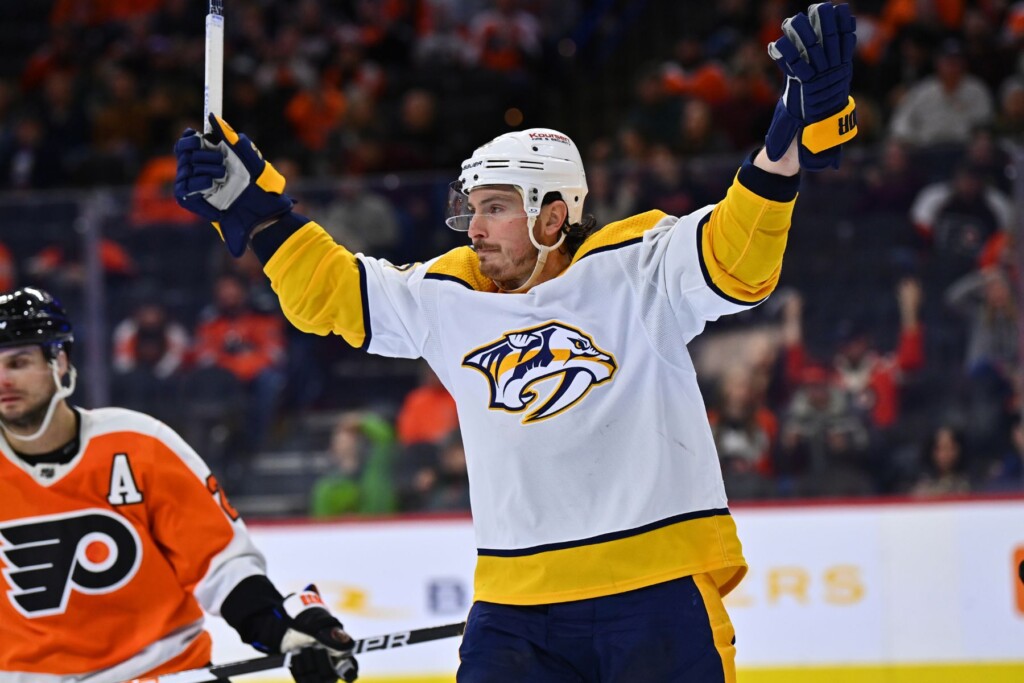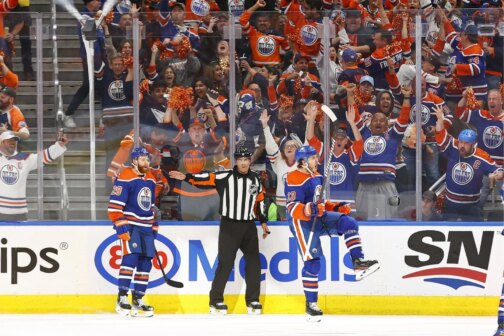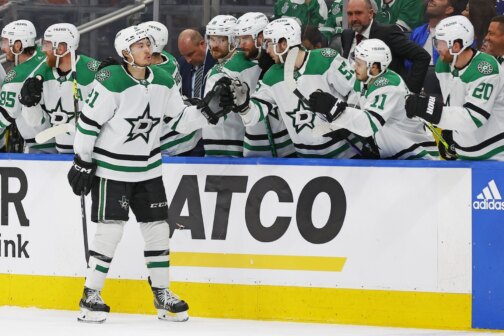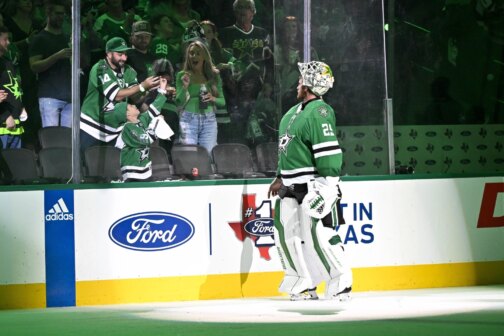The hiring of Pete DeBoer brought an ideological change to the Stars’ forwards last season.
DeBoer doesn’t believe in strict line matching or late-game roles for defensive-minded players. He’s a proponent of splitting the ice time evenly; as a coach, his job, in his own words, is to “create time and space for offensive players and then let their instincts take over.” It works: in Year 1 under DeBoer, the Stars scored 285 goals, seventh-most in the NHL and their most in a season since the team moved to Dallas.
Even more impressively, DeBoer was doing so with a roster that was still partially structured for Rick Bowness and Jim Montgomery. DeBoer’s predecessors were keen on having a checking line that played zero-sum hockey. While DeBoer focuses on creating time and space for offensive players, Bowness and Montgomery spent more energy trying to take away the time and space of opponents.
DeBoer adapted, and his players did, too. But general manager Jim Nill likes to build a roster that fits his coach, and coming out of free agency, the Stars’ forwards now fit DeBoer’s ideal vision for offensive hockey.
Matt Duchene is the big get, surprisingly available as a free agent after getting bought out by the Nashville Predators in their organizational rebuild. The 32-year-old is just two years removed from an 86-point season and still scored 22 times and amassed 56 points last season for a struggling Predators team. Combined with Evegnii Dadonov’s re-signing, the Stars now have a collection of top-nine forwards who thrive in transition and can create the space that DeBoer seeks in the offensive zone.
On top of that, the Stars could also have a fourth line that provides timely offensive prowess, like the Vegas Golden Knights did en route to winning the Stanley Cup in 2023. The Stars let Luke Glendening walk in free agency, and replaced him with Craig Smith and Sam Steel. Smith is more of a finisher than the Stars’ fourth-line options last season, while Steel is a smart bet as a younger player who wasn’t qualified by the cap-crunched Minnesota Wild.
With pending restricted free agent Ty Dellandrea still to be signed, the Stars seem to have eliminated any role for Radek Faksa, who was beloved by prior coaching staffs but doesn’t fit DeBoer’s system. While his contract might be a stumbling block, Faksa could be moved sooner than later as part of the greater offensive vision.
The best part about all of this offseason posturing is that it won’t hamstring the future. By building a four-line attack instead of a strict top-six versus bottom-six, the Stars haven’t limited Logan Stankoven or Mavrik Bourque’s chances of making the team. If either prospect gets to the NHL in a fourth-line role, it won’t be as a checker or defensive specialist. They’d be able to help the Stars by playing their game. And if Stankoven and Bourque aren’t ready—I’m not sure they will be for opening night—the recent signings make for easy stopgaps without clogging roster spots or cap dollars long-term.
Top to bottom, then, the Stars will go into next season with one of the deepest forward cores in the NHL. That alone should make them a Stanley Cup contender out of the Western Conference.
The flaws lie on the blueline, where after Miro Heiskanen the defensive core looks especially thin, even with Thomas Harley ready to take another step after a breakout playoff performance. Ryan Suter will again play a big role; he’ll also be a year older—he turns 39 in January—and a step slower. Esa Lindell will have to rediscover his game after some playoff struggles, while Nils Lundkvist’s progress moves from a curiosity to a necessity.
Aside from Heiskanen, each Stars defender enters the season with a major question mark. That includes Harley, whom Vegas exposed in the defensive zone at times in the playoffs.
So while the offense should be spectacular, the Stars are rolling the dice defensively, and they are also rolling the dice in net. Other teams loaded up on goalies in free agency, to the point that several focused on bringing in a third NHL-quality netminder The Stars, meanwhile, are still betting heavily on the health of Scott Wedgewood, which is a problem given that his inability to stay on the ice plus the Stars’ distrust of third-stringer Matt Murray led to the overuse of Jake Oettinger, which caught up to Dallas later in the playoffs. The Stars’ attack-based philosophy, combined with that question-filled defensive core, will only accentuate any goaltending issues that arise.
But that may not bite the Stars if they can spend even more time exposing other teams’ goaltending issues. It won’t be full Lindy Ruff, run-and-gun hockey—that 2015-16 team never had a calming force like Heiskanen—but rest assured that Dallas heads into 2023-24 as one of the most entertaining teams in the NHL.
And if they can answer a couple more key questions along the way, the Stars could be the NHL’s best, too.
Author






